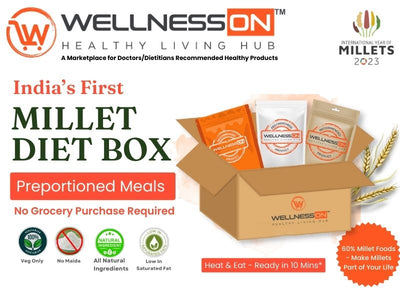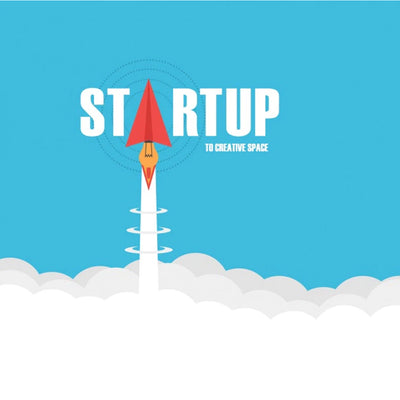INTRODUCTION
The Indian meal is a complex and little-understood phenomenon. Typical meals often include a main starch such as rice, sorghum, wheat and vegetable or meat curries and a dried vegetable dishes and plain yogurt, or a vegetable raita, salted pickles, fresh herbal and cooked chutneys, dried and fried wafers (papad) and occasionally dessert. Indian meals can have huge variations across the subcontinent, and any of these components in different orders and with different ingredients might constitute an Indian meal.
Indian cuisine consists of a variety of regional and traditional cuisines native to the Indian. Depending upon soil, climate, culture, ethnic groups, and occupations, these cuisines vary substantially and use locally available spices, herbs, vegetables, and fruits.
The meal is eaten first with a sweet, followed by all the dishes served simultaneously and mixed together with the rice, based on the eater’s discretion. The meal ends with yogurt, which is thought to cool the body, and then followed by sweets and/or fruit. Festival meals usually end with a digestive in the form of a Paan (betel leaf) , which again has regional variations of style and taste.
Contents Of A Meal Plate :
The food in each meal plate may be different based on the cooking methods, however it has its own place in our plate. They are
Salads
On a daily basis, Salads should be included in the diet and no other food item is as important as salad. By understanding the health benefits of salad it is called a “King or Prince of the Menu”. It consists of Vitamins, minerals, phytonutrients and fiber which prevent chronic diseases. It is ideal for weight management, hydrating hairs, nails and helps to maintain the health of the digestive system.
Rice Or Roti
Rice is a vital ingredient in all the different cuisines of India. All over India, rice is consumed at least once a day by most people in one form or the other. In South Indian cuisine, rice is the main source of carbohydrate and is eaten almost all three times a day, breakfast, lunch and dinner in different forms. It is eaten as dosa or idli for breakfast and also as evening snack/tiffin, eaten as plain rice along with different curries or side dishes or as lemon rice, bisibelebath, pulao, etc for lunch and dinner. Rice is also used to prepare snacks like chalki, kodubale, etc. Some deserts/sweet dishes like kheer, phirni, etc., are also prepared using rice as the predominant ingredient.
Roti/Chapati can be eaten with any form of curry and mostly preferred with dry curries. Chapathi’s need more time for preparation when compared to rice but are very nutritious. It consists of complex carbohydrates, fiber, thiamine, Vitamins B, E, and minerals like copper, zinc, iodine, manganese, silicon, potassium, calcium. Other than wheat flour, chapathi is also prepared with different millet flours or cereal flours. Because of their high fiber content, chapathi aids in maintaining glycemic index and prevents constipation
Dal
Dals are highly nutritious and rich in taste. Each state in India has its own favourite selection of dal, the most common ones include the Toor, Urad, Moong, Masoor and Chana dals. Each of these dals is also prepared in different ways in different regions.
Moong dal is preferred mostly in the form of snacks, added in soups, and is also used as an ingredient in delicious curries and sweets. Chana dal, urad dal and Masoor dal are stocked in Indian kitchens as they are primarily used in preparation of dals, sambar and Vada. Dals are excellent sources of protein, thiamine, Folic acids. Most of the time dal can be replaced by rajma, cholae, lobia, moong, paneer, tofu which has more nutrients.
Vegetable curry
In a typical indian plate, vegetable curry stands in 3rd position but yet an important part. Most of the time, the dal and a vegetable is combined and prepared which increases the nutritional value of the plate. People who dislike eating green leafy vegetables separately can be served with a green leafy dal such as spinach dal, fenugreek dal etc.,. An alternation of green leafy vegetables and other vegetables can be done to meet different nutrients from different vegetables. This part becomes an excellent source of all micronutrients, fiber and water
Non- Veg curry
At times based on their taste, eating habits, mood swings, cultural beliefs, people have a major meal by replacing dal and vegetable curry with a non veg curry. It can include chicken, mutton, beef, fish, prawns, shrimps, eggs etc., in curry form or in fried form. This part of the plate is an excellent source of protein, omega – 3 – fatty acids, Iron, Vitamin B12, DHA .It is always advisable to limit the intake of non Vegetarian foods to avoid any health related problems.
Curds
The quantity of curd in a plate is less when compared to other items, but is more nutritious and healthy. It is an excellent probiotic, good source of calcium, protein and electrolytes which aids in soothing the gastrointestinal tract, Improving gut bacteria and aids in digestion. It can be consumed in different forms as buttermilk or raita’s which anyway proves beneficial to body
Sweet
Sweet is eaten mostly to satisfy the taste buds. While a person has sweet, the amount of saliva increases and thus fastens up the digestion process by increasing the digestive enzyme secretions in the body.
Pickles
Pickles add extra taste on taste buds. Their tangy taste when consumed with meals satisfies a person’s need and craving. They are excellent prebiotic, boost gut health, reduce muscle cramps as they are prepared by fermentation process.
Salads
On a daily basis, Salads should be included in the diet and no other food item is as important as salad. By understanding the health benefits of salad it is called a “King or Prince of the Menu”. It consists of Vitamins, minerals, phytonutrients and fiber which prevent chronic diseases. It is ideal for weight management, Hydrating hairs, nails
IMPORTANCE OF EACH MEAL
In general, the common practise is to consume 3 meals in a day -breakfast, lunch and dinner. Due to work stress or other reasons, most of us skip any one meal for the day. But we fail to understand the importance of each meal and their nutritional significance.
Breakfast
Breakfast is very essential and should be consumed feasibly in larger proportions when compared to other meals of the day. Stomach stays empty the entire night i.e.,for about 6-8 hours, and when a person does not eat his breakfast, the starvation period prolongs leading to fall in glucose level in the body. Consumption of breakfast daily boosts the brain cells, turns lethargy into activeness, aids in weight management, reduces the risk of obesity and diabetes.
Preferable food intake in breakfast : Porridge, Idli, dosa, uttapam, Whole grain cereals or toast with butter and omelette. Any food which is rich in protein, carbohydrates with moderate amounts of fat will be an ideal choice.
Lunch
Skipping lunch is like going on a mini fast and may lead to intense feelings of hunger. This leads to deterioration in performance at work. A healthy, sustaining lunch should be based around cereal (rice/roti) , pulse (dal/legumes), vegetable curry and fresh curd. Include a drink with lunch for easier digestion. A non vegetarian and ovo – vegetarian can include an egg, chicken, fish, mutton for lunch and to be consumed in moderation.
Dinner
Dinner is an important meal, which can include many food items and can be feasibly experimented with different ranges of food. A healthy dinner is linked to good sleep, good choices at breakfast and lunch, lower inflammation, greater resilience to stress, better digestion, stable blood sugar and lower anxiety.As there is minimal activity after dinner, the quantity of food should be less when compared to breakfast and lunch to avoid chances of gaining weight and blood sugar levels. The foods included should be easy to digest, low in calories and foods which are prepared by adopting simple cooking methods like steaming, poaching, boiling etc.
Snacks
Opting for healthy snacks plays a vital role in maintaining the health status of an individual.It is important to include plenty of fruit in daily routine. Boiled chole, rajma, lobia, moong, saute paneer, tofu can be consumed as snacks. Rusk, Rice flakes, puffed rice, Crackers can also be included as snacks.
An Indian breakfast should provide around 500- 600 kcals, lunch- 400-500 kcals and dinner 300-400Kcals. Snacks should provide 100 – 200 kcals. If overall calculated, 1500 – 2000kcals could be provided. To meet these requirements, inclusions of food items from each food groups is mandatory
EATING PATTERN :
Generally the Indian diet is consumed by mixing cereal (rice, millets and other cereals) with Pulses (dal, legumes,beans) . The strong reason behind this combination is cereals lack in lysine(amino acid) and pulses are deficient in methionine(Amino acid), whereas cereals are rich in methionine and pulses are rich in lysine, mixing them with each other in a meal, provides all the nutrients and they complement each other to fulfill it. Consumption of raw salad or juice provides water soluble vitamins and certain minerals which are lost in the cooking process. Consumption of each meal and right food combinations in each meal play a vital role in the nutritional status of a process.
Our traditional foods and eating patterns had a significant role in our health. Due to modernisation, that led to change in eating habits, inclusion of ready to eat foods and consumption of calorie dense and less nutritional foods caused the increase in lifestyle and hormonal disorder.









